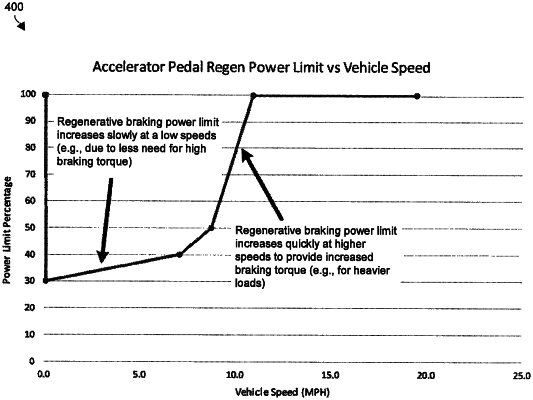| CPC B60L 7/18 (2013.01) [B60L 7/14 (2013.01); B60L 3/108 (2013.01); B60L 2200/22 (2013.01); B60L 2240/32 (2013.01); B60L 2250/26 (2013.01); B60T 2270/613 (2013.01)] | 17 Claims |

|
1. A method of controlling regenerative braking to reduce skidding of a vehicle, the method comprising:
imparting rotation to an induction motor to move the vehicle;
while the induction motor rotates at a first rate, applying a first power level limit for regenerative braking to the induction motor; and
while the induction motor rotates at a second rate, applying a second power level limit for regenerative braking to the induction motor, the second power level limit being less than the first power level limit, each of the first power level limit and the second power level limit imposing an upper limit to power available to the induction motor during regenerative braking;
wherein imparting rotation to the induction motor to move the vehicle includes:
sensing that a forward/reverse switch of the vehicle is set to a forward position,
sensing operation of an accelerator pedal of the vehicle, and
in response to sensing that the forward/reverse switch is set to the forward position and sensing operation of the accelerator pedal, driving the induction motor to move the vehicle in a forward direction;
wherein applying the first power level limit for regenerative braking to the induction motor includes:
sensing that the vehicle is moving in the forward direction,
ascertaining that the induction motor is currently rotating at the first rate, and
based on the vehicle moving in the forward direction and the induction motor currently rotating at the first rate, directing the induction motor to provide braking torque that slows the vehicle in accordance with the first power level limit.
|